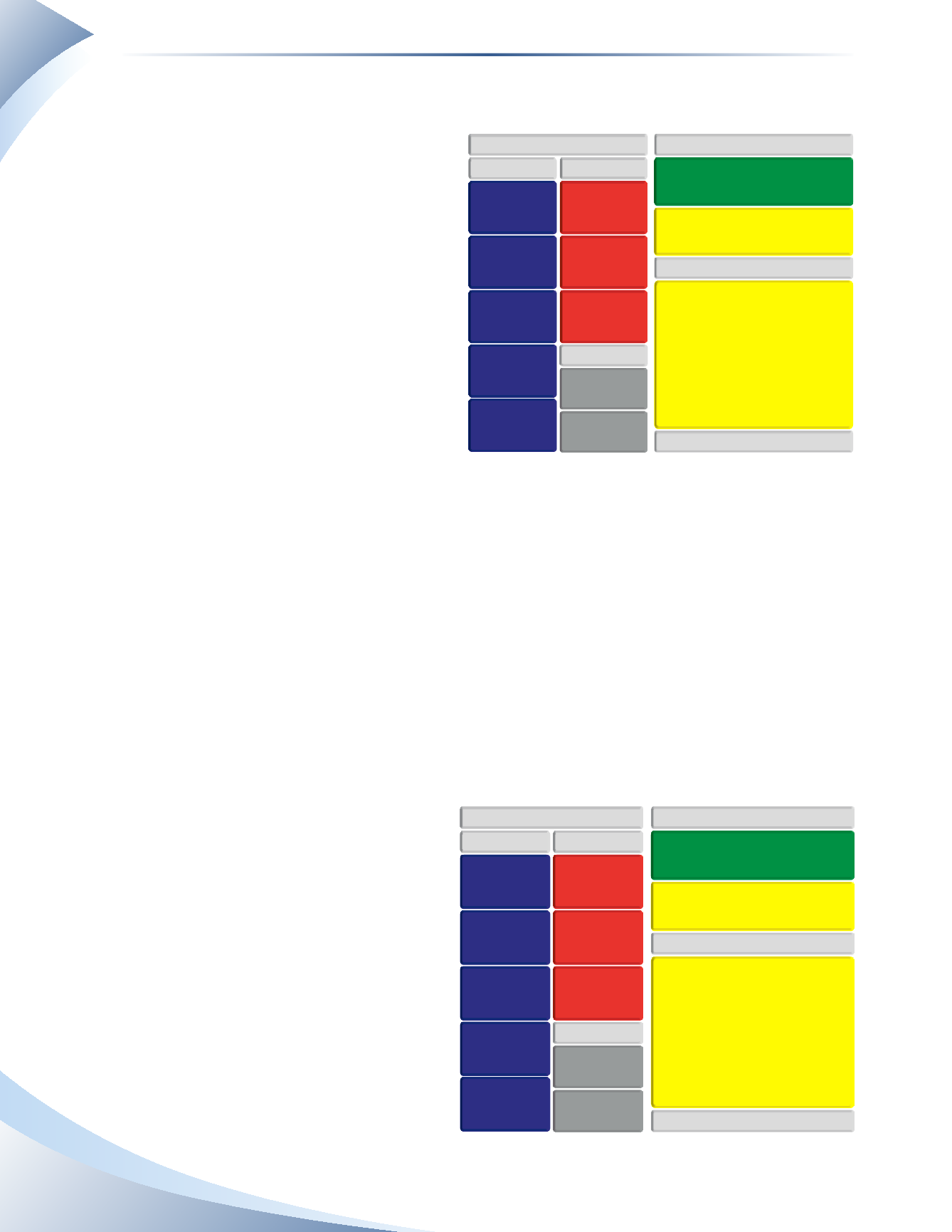
Chapter 2
Linking Personal Accounting to Business Accounting
32
Service Business
The financial statements shown in Figure
2.6 represent a simple service business.
Examples of services include accounting,
consulting, lawn maintenance or general
contracting. A fewnew items are presented
on the income statement and balance
sheet: cost of sales, gross profit and work
in progress.
Cost of sales are the expenses directly
tied to the service revenue earned. In a
consulting firm, this would be the salary
of the consultants. All other expenses
would be part of the operating expenses
(i.e. rent, insurance, depreciation, etc.).
The difference between service revenue and cost of sales is called gross profit.
Gross profit
is
used to pay for all other expenses and will be discussed in detail later in the text. Not all service
businesses will use cost of sales, in which case every expense is considered an operating expense
and there is no gross profit.
On the balance sheet, there may be an asset account called work in progress. This represents
jobs that are currently being worked on but are not yet complete. For example, a training
company in the middle of developing a training program.This partially completed work would
be eventually recognized as cost of sales and matched to revenue when the service is delivered
to the client.
Merchandising Business
The financial statements shown in Figure
2.7 represent a merchandising business.
Any company that buys goods to resell to
customers is considered a merchandising
business. A common example is a retail
store. Examples of retail stores include
hardware, clothing, toy and convenience
stores.
On the balance sheet, there is a new
asset called inventory. This account
tracks the value of all the goods the store
has purchased and intends to sell to its
customers. Once these items are sold, the
INCOME STATEMENT
NET INCOME (LOSS)
GROSS PROFIT
OPERATING EXPENSES
SERVICE REVENUE
COST OF SALES
BALANCE SHEET
ASSETS
CASH
WORK IN
PROGRESS
PREPAID
EXPENSES
PROPERTY, PLANT
& EQUIPMENT
ACCOUNTS
RECEIVABLE
LIABILITIES
ACCOUNTS
PAYABLE
UNEARNED
REVENUE
BANK LOAN
OWNER’S EQUITY
OWNER’S
CAPITAL
OWNER’S
DRAWINGS
______________
FIGURE 2.6
______________
FIGURE 2.7
INCOME STATEMENT
NET INCOME (LOSS)
GROSS PROFIT
OPERATING EXPENSES
SALES REVENUE
COST OF GOODS SOLD
BALANCE SHEET
ASSETS
CASH
INVENTORY
PREPAID
EXPENSES
PROPERTY, PLANT
& EQUIPMENT
ACCOUNTS
RECEIVABLE
LIABILITIES
ACCOUNTS
PAYABLE
UNEARNED
REVENUE
BANK LOAN
OWNER’S EQUITY
OWNER’S
CAPITAL
OWNER’S
DRAWINGS


